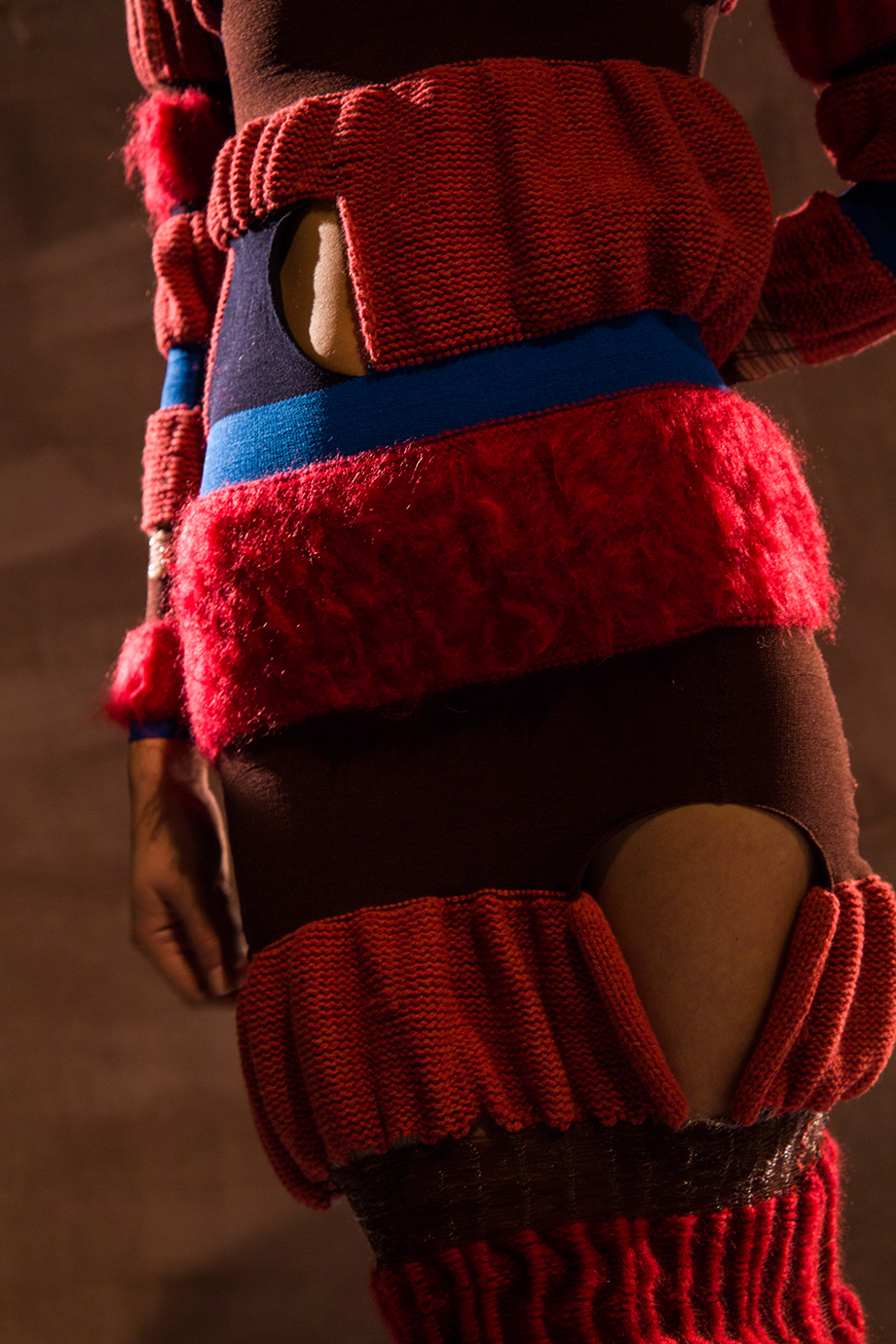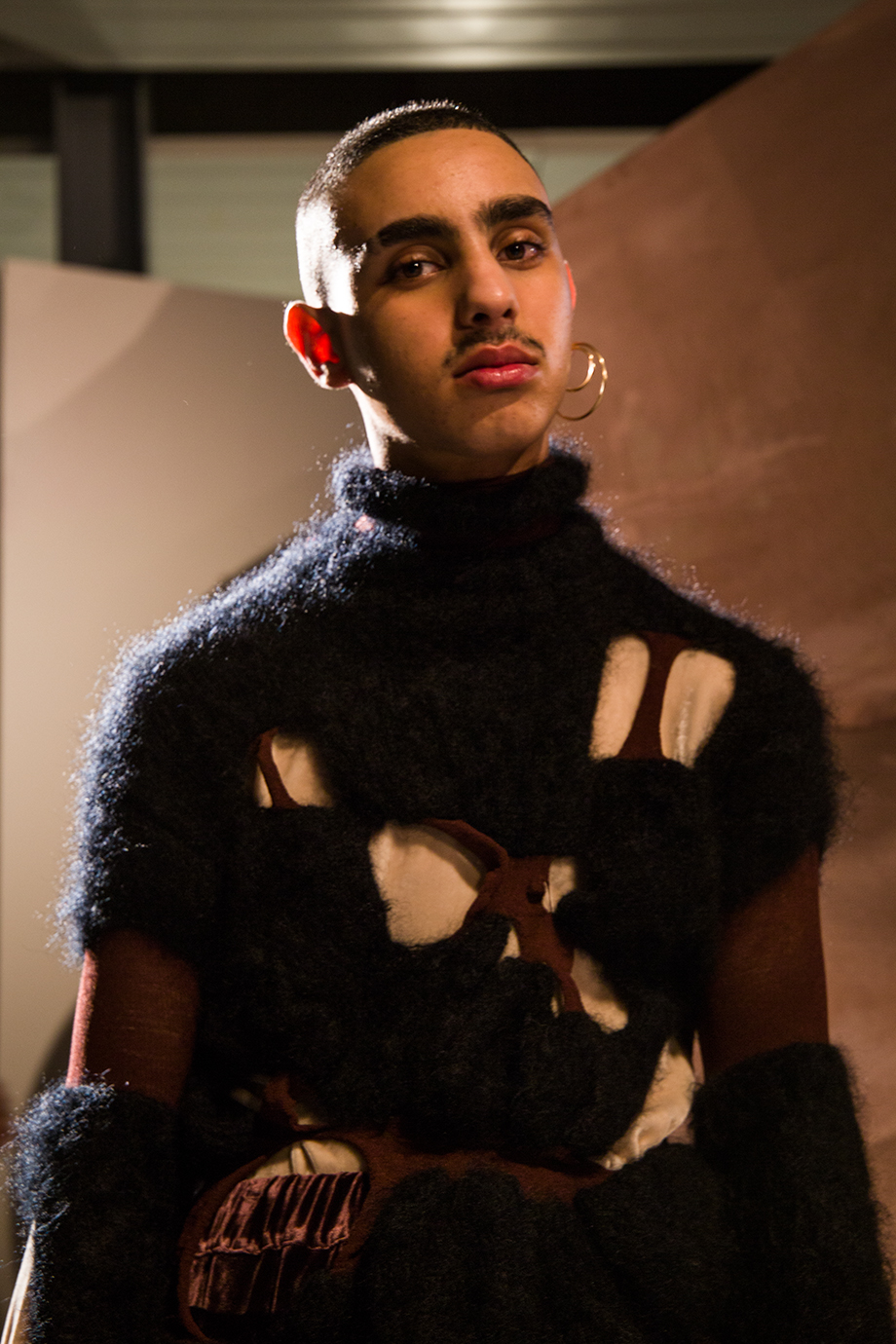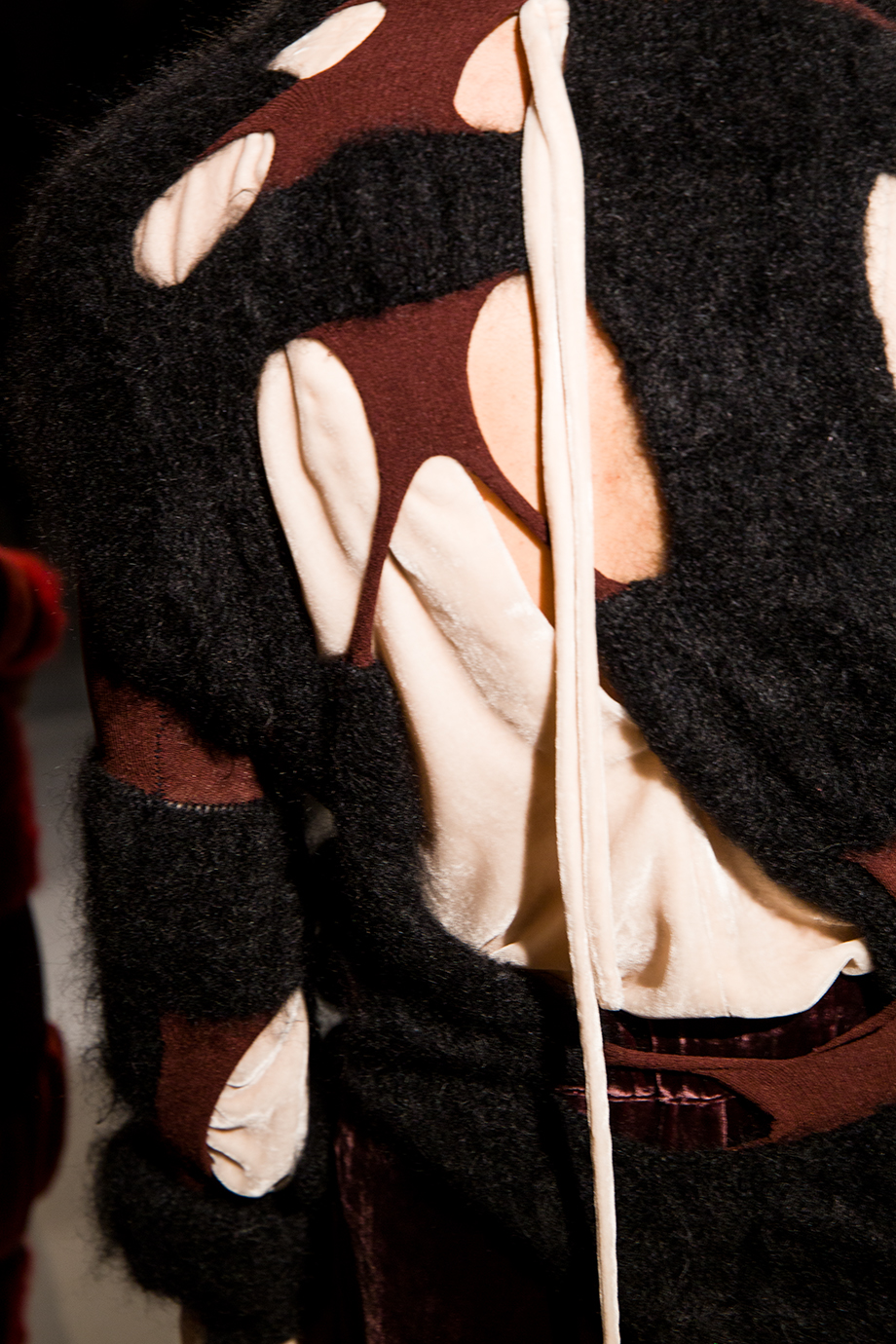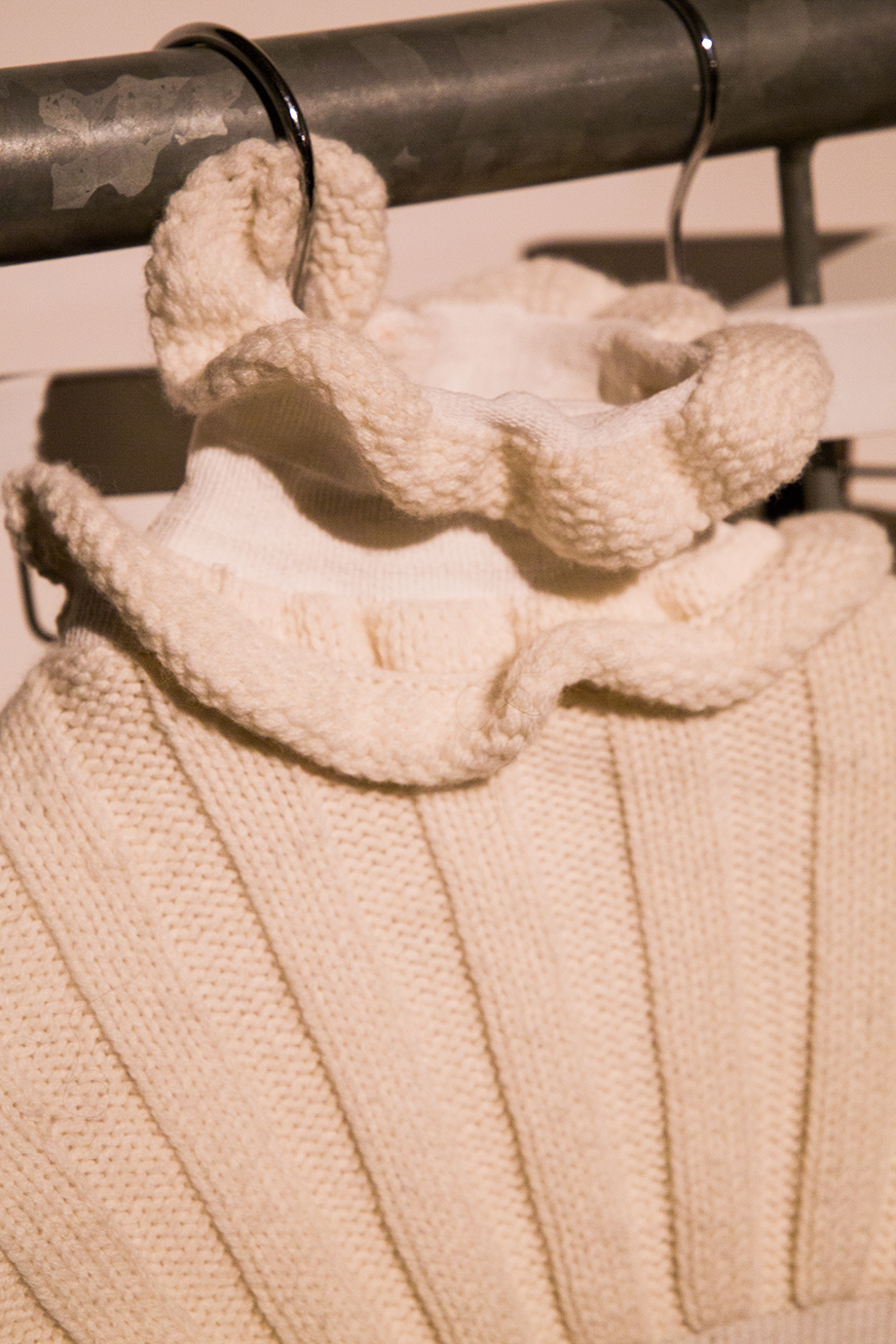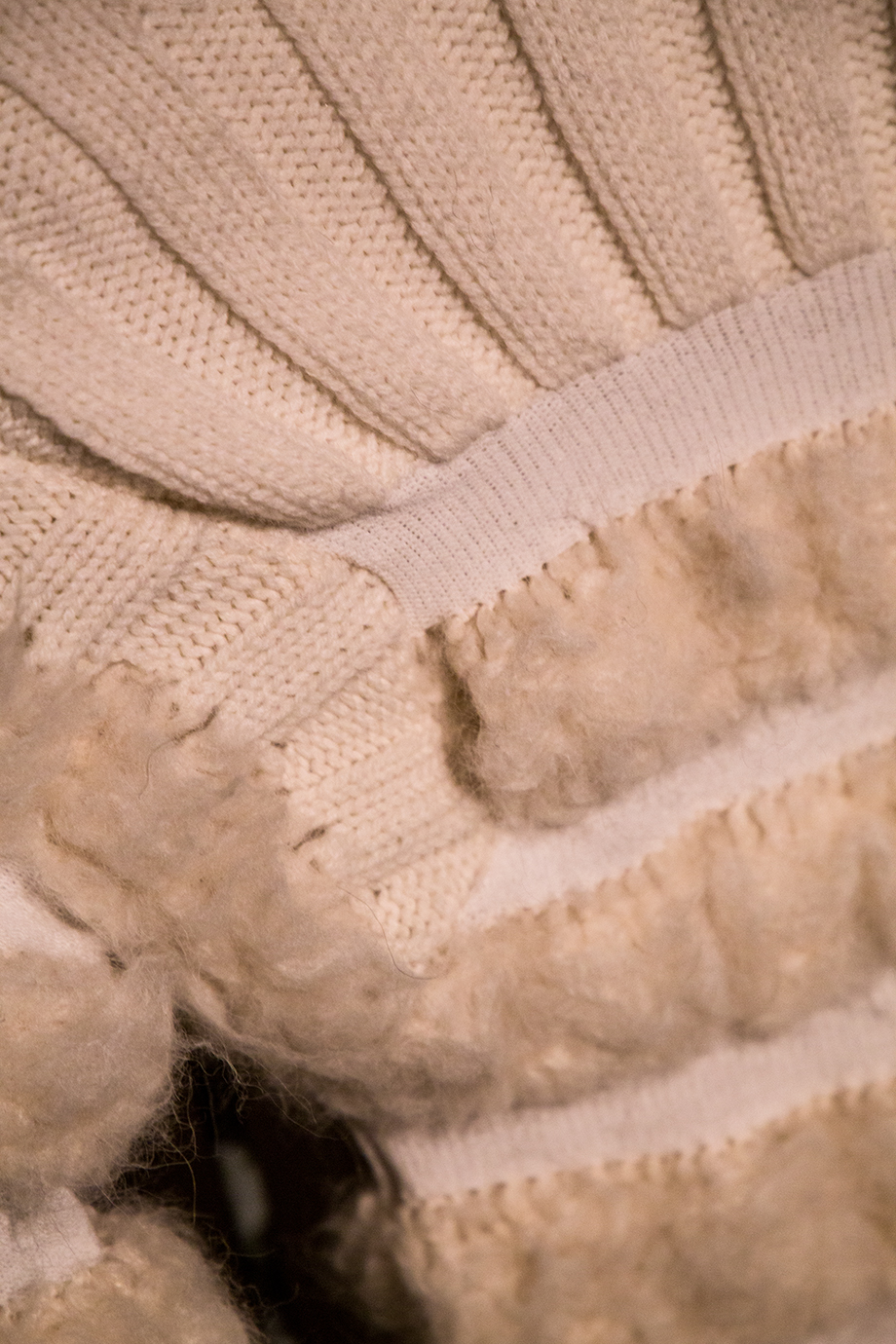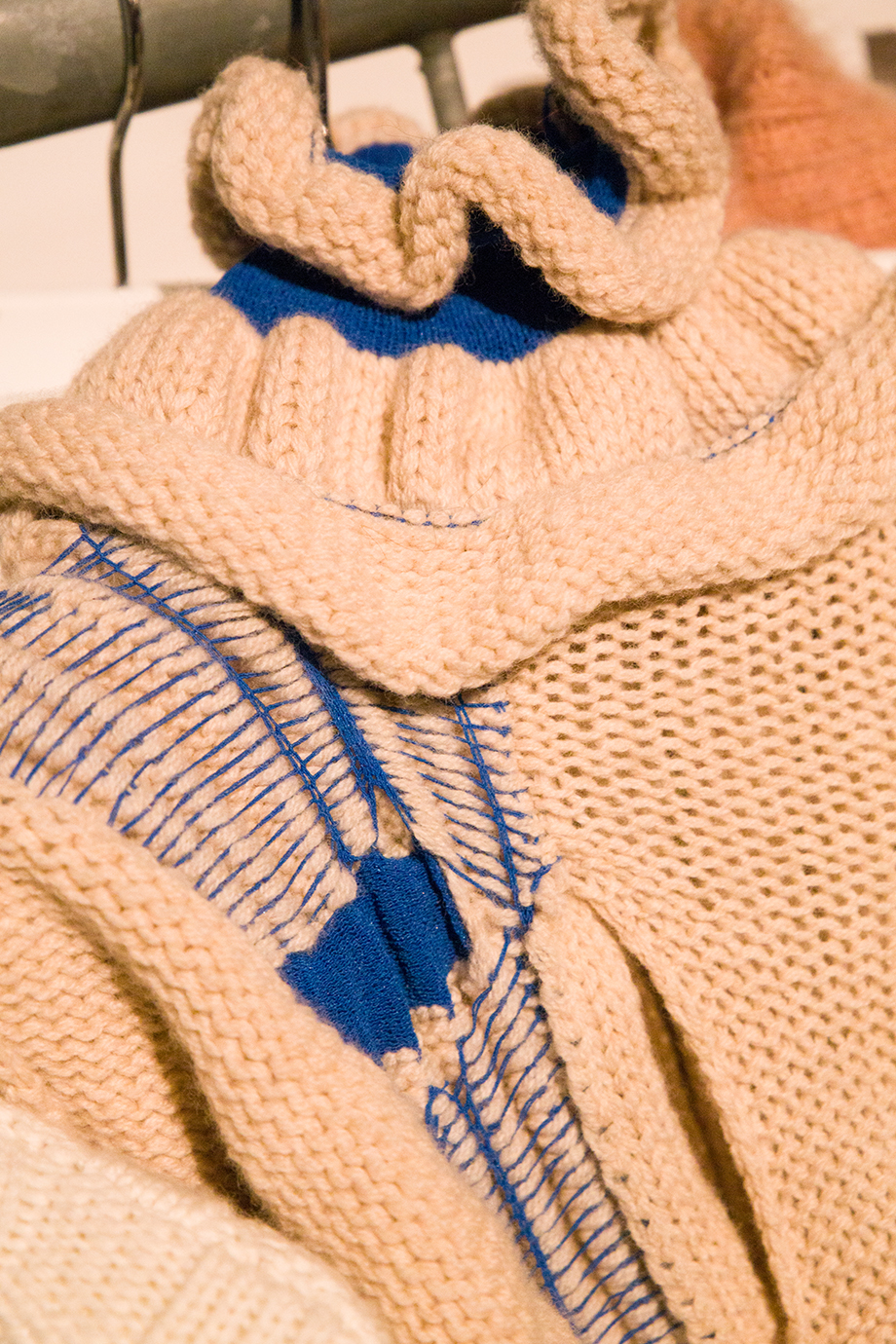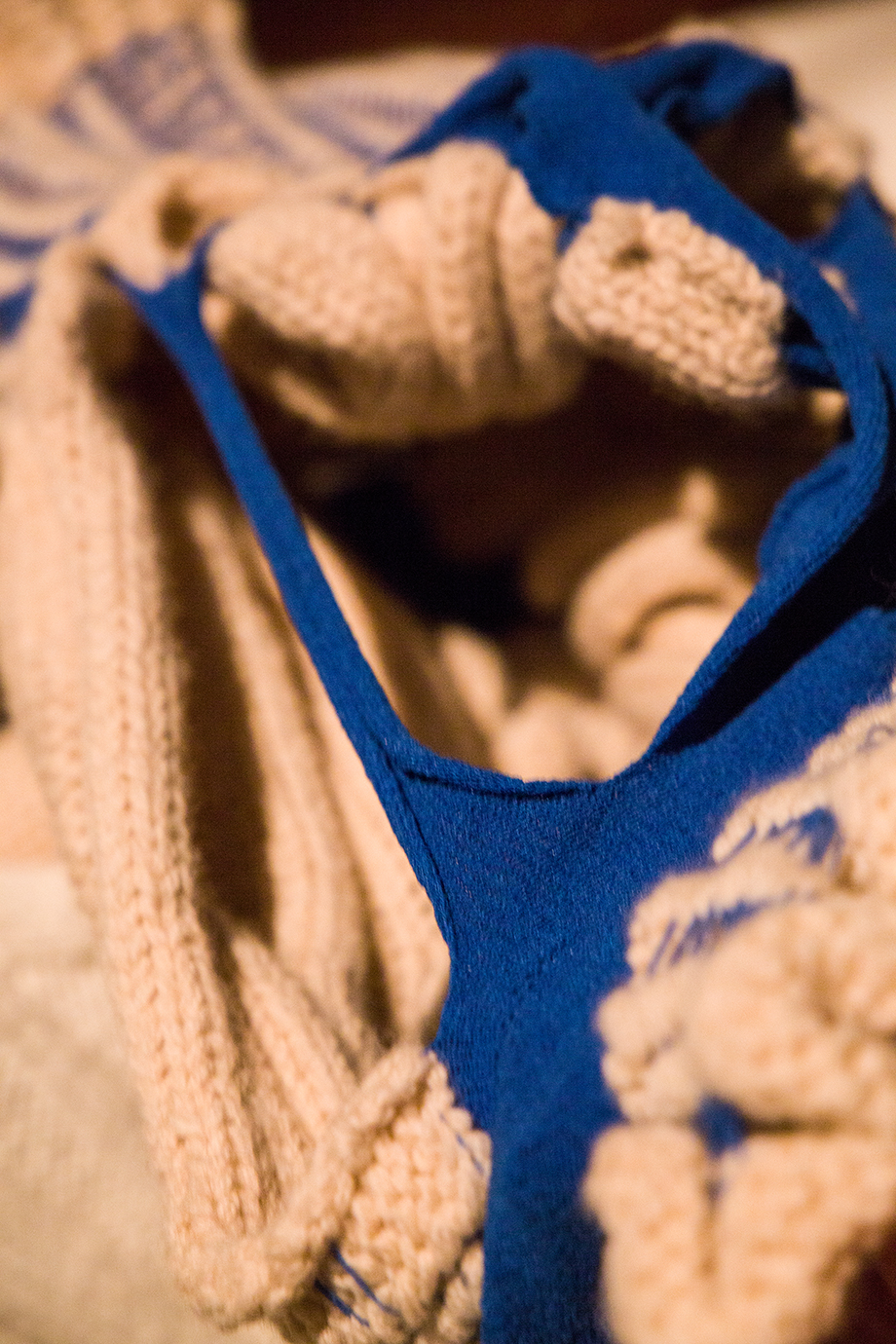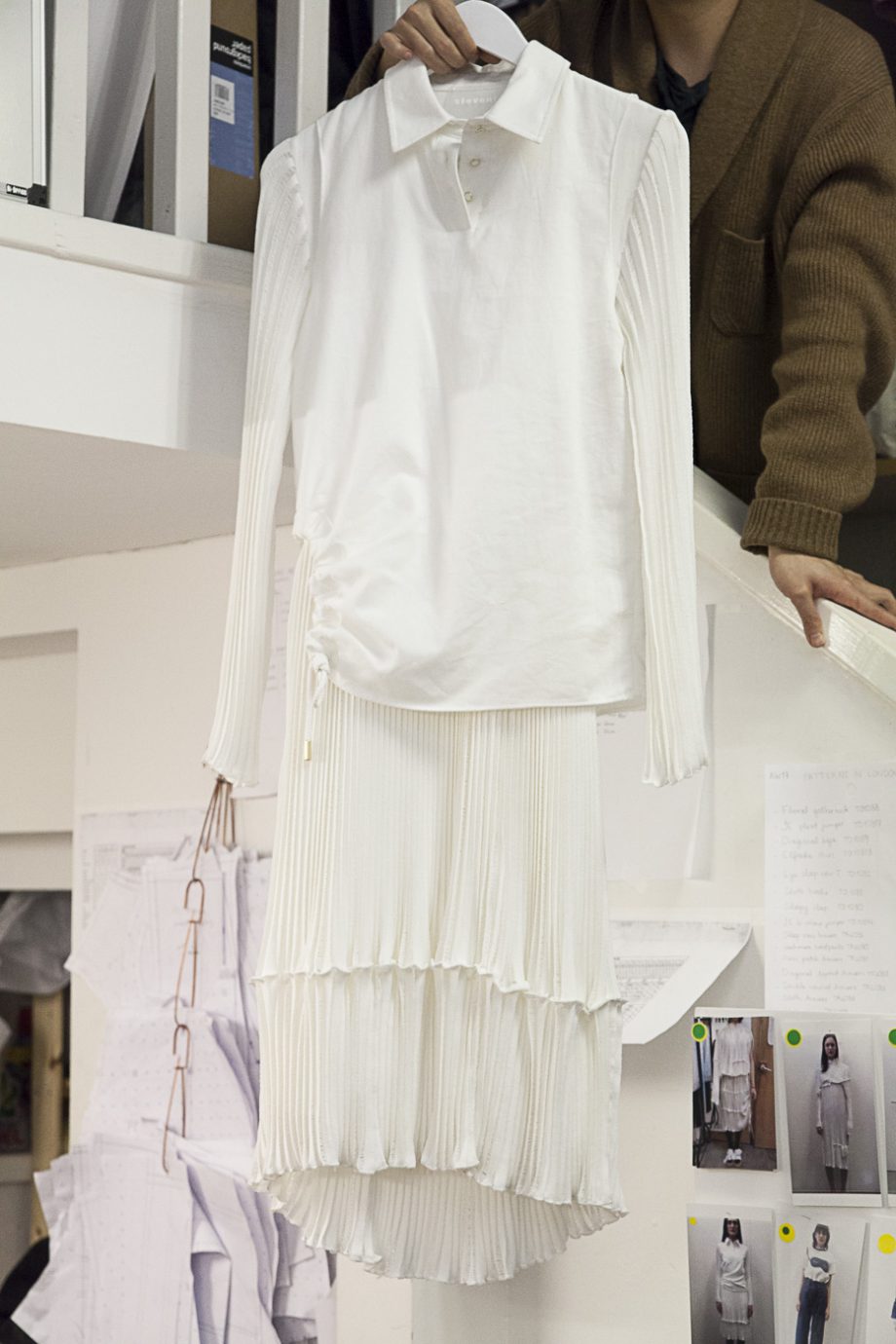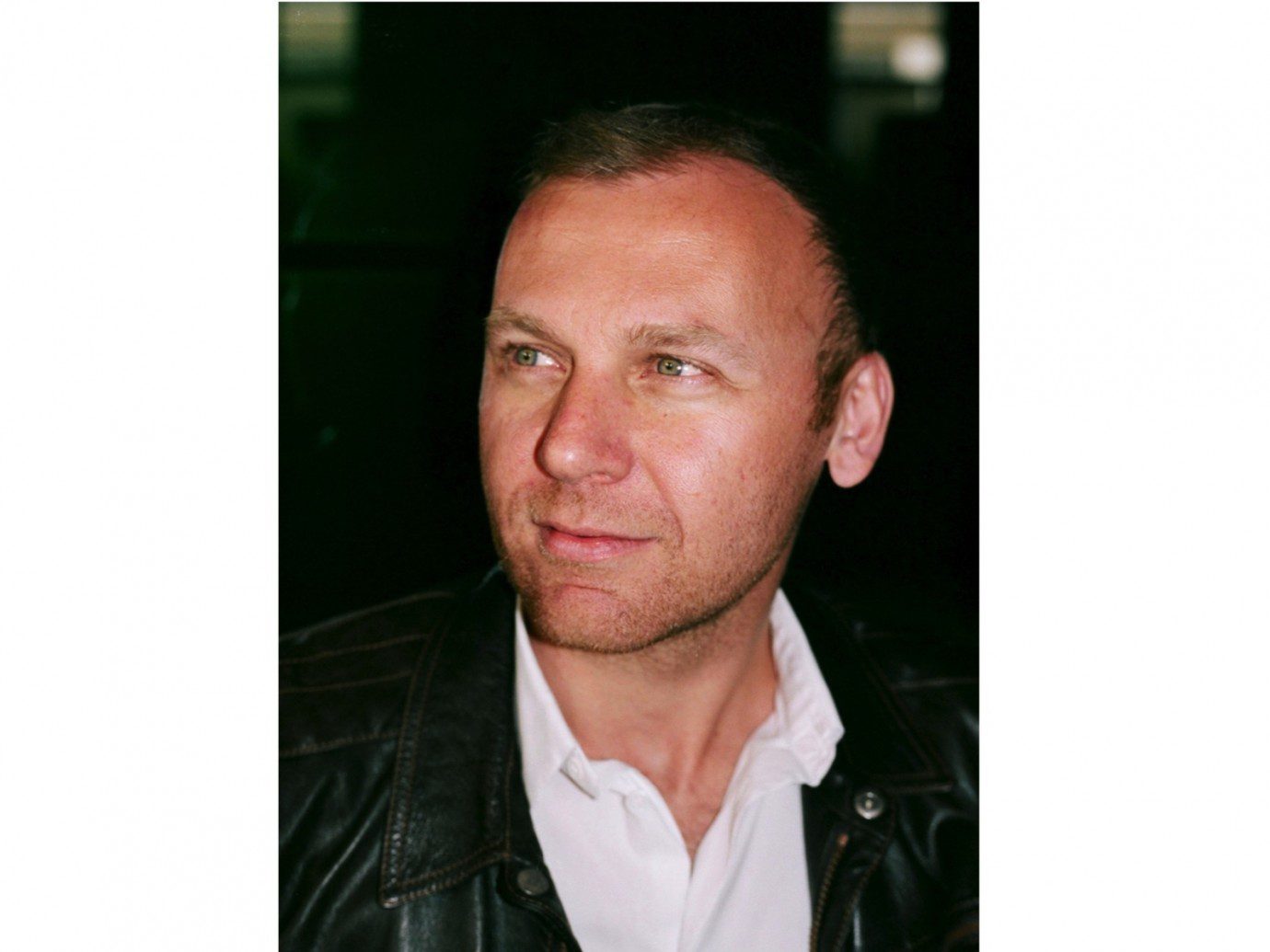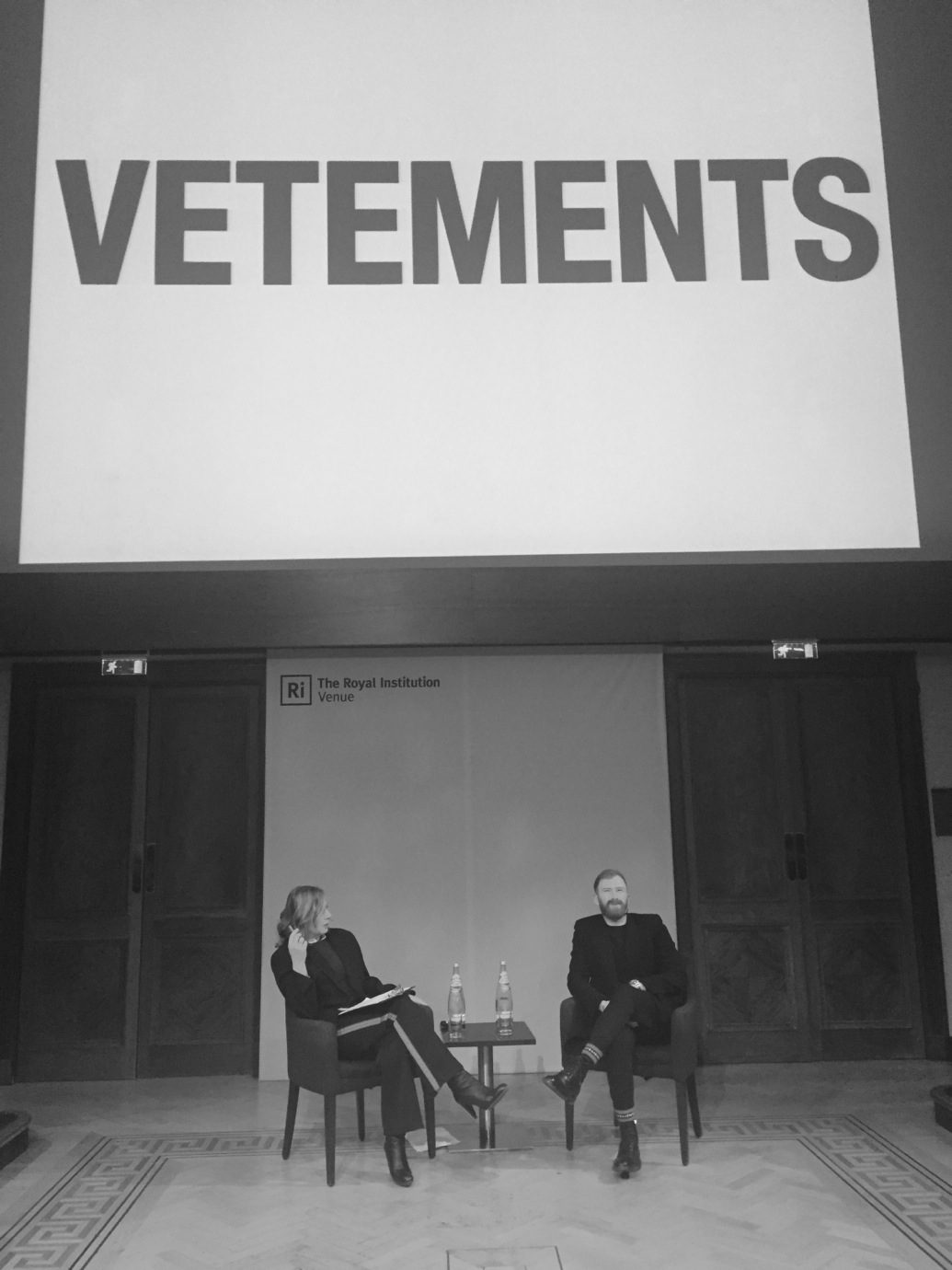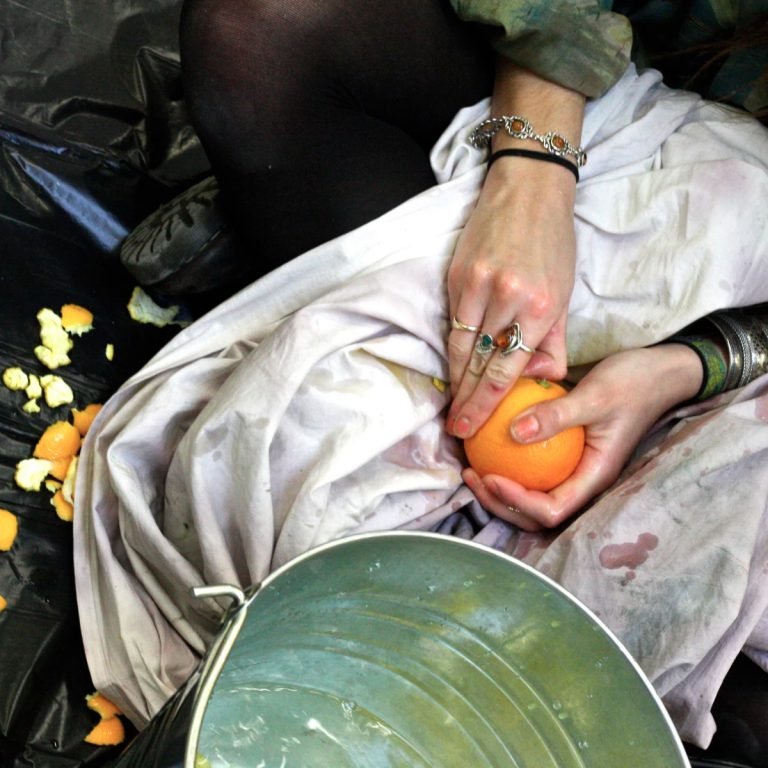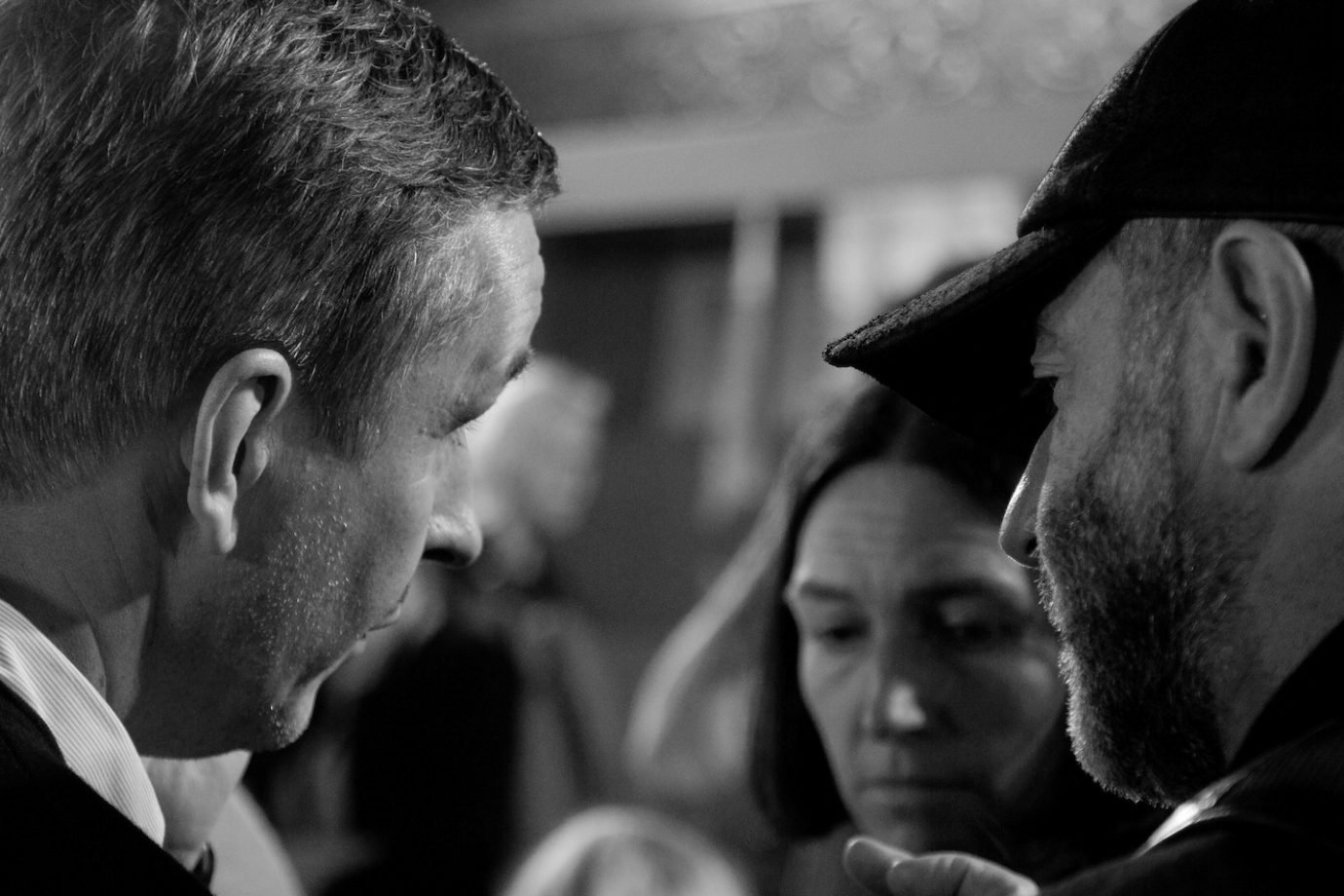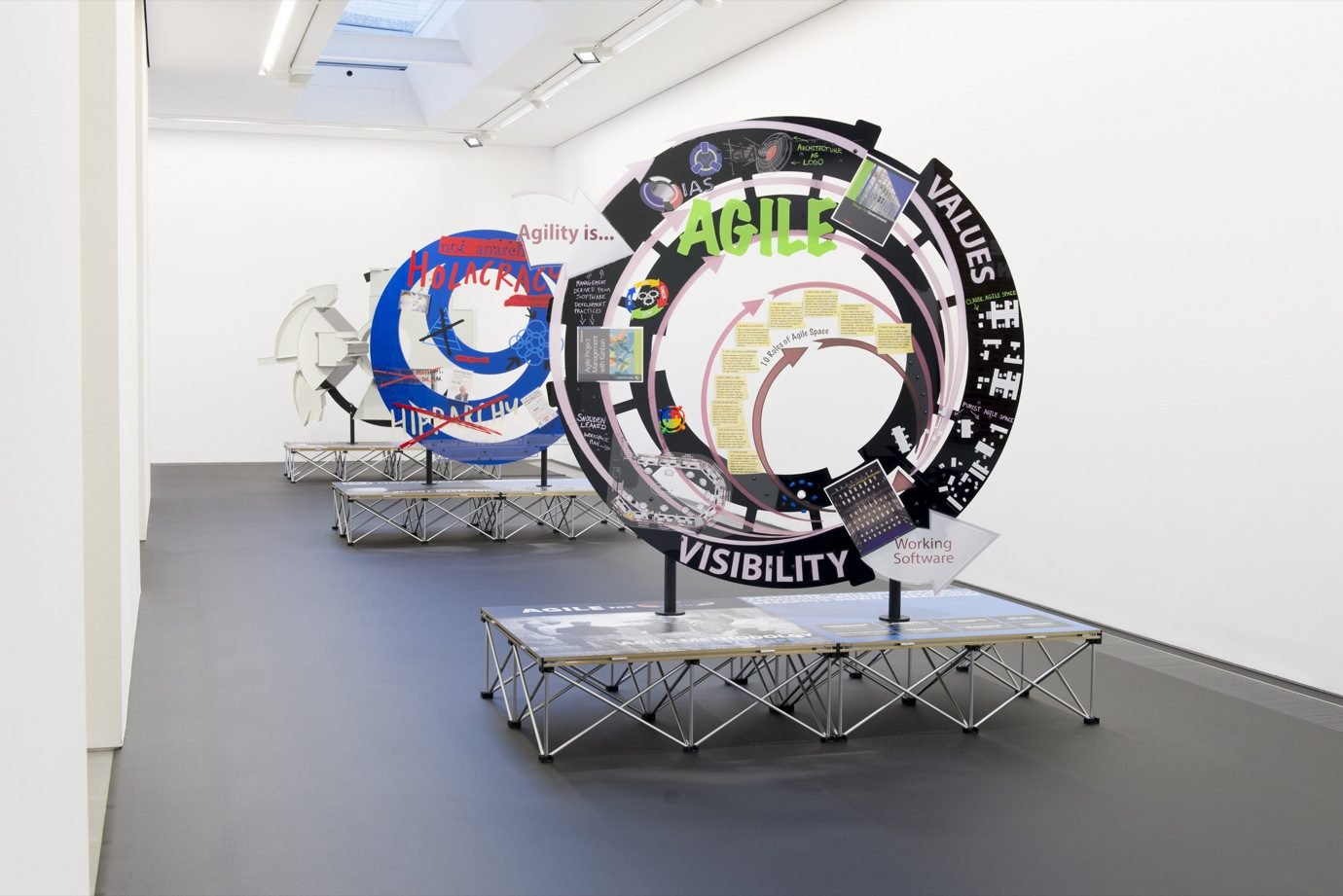“WE’RE REALLY INTO YVES KLEIN PRINTS, AND WE WANTED SOMETHING SIMILAR, BUT WE WANTED IT TO BE ABOUT THE BODY. TO DO THAT, ONE OF MY ASSISTANTS GOT NAKED, WE PAINTED HER, THEN TOOK THE IMAGES AND HAD THEM MADE INTO JACQUARD KNIT JUMPERS.”
Let’s talk about those new techniques – what were you using?
We added quite a few new stitch structures, and the yarns each react uniquely to different washing and brushing techniques. We used a lot of italian alpaca, mohair, lambswool… the elasticated yarn that we use for most seasons remained, but we mixed it with a transparent yarn, so that you could see more of the body, and create a more interesting texture.
How much does the body influence your designs?
I think there’s something really organic about the human form, because everyone’s shape is different. Where clothes fit on the body really varies, so where you place a hole will sit in a new place on everyone. It’s quite nice to see that, and also to see which part of the body that hole might reveal.
Were you thinking about those shapes when choosing your fabrics?
Yeah, definitely. So we had a really, really thick one, like the Alpaca, which is… not difficult to knit with, but you definitely have to knit with it in a different way from how you would knit the lambswool, for example. We wanted it to not all be just one fabric, which is especially hard to do in knitwear, as you have to think about all the different types of yarn that you’re going to use to create something interesting. I think we’ve got a really good range of weights this season.
How does the design process start for you?
I think every season we just have to make a really great jumper and develop the collection from there. Because we make everything by hand – and the process is really long – it’s better for us to make a couple and see if what we’ve created actually works. As we hand make our fabrics, everything needs to happen in stages. Yes, the stitches, the way a piece works on the body, and the volume and tightness… that is all still conceptual and interesting, but if you look past that, at the shape of the garment, it comes down to a simple jumper shape that is very wearable.



